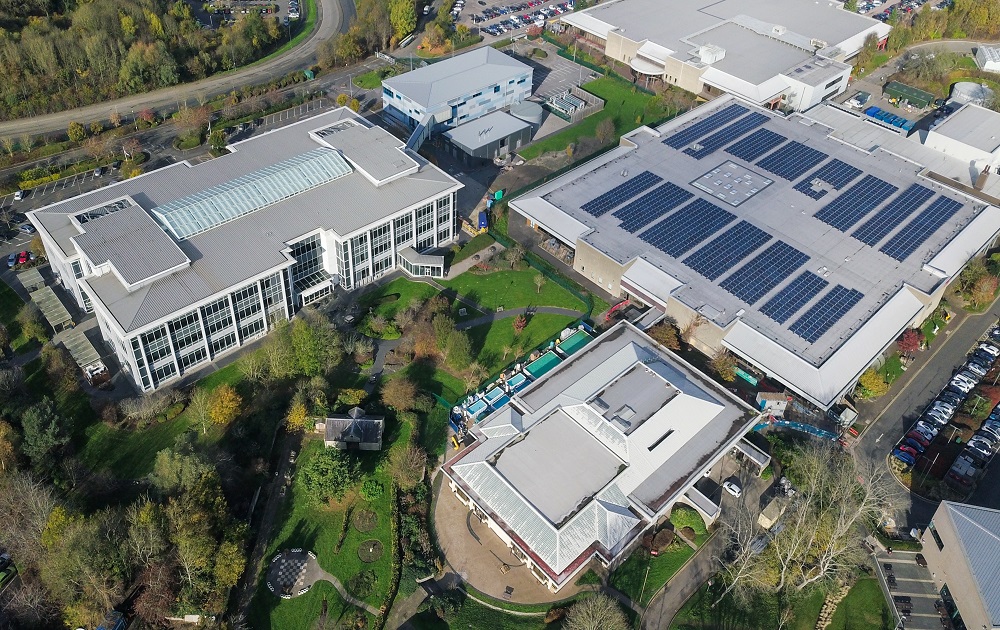In Pakistan’s rapidly warming climate, reliable cooling is no longer a luxury — it’s a necessity, especially in schools and clinics that serve our communities’ most vulnerable populations. High temperatures not only cause discomfort but can lead to serious health risks, disrupt education, and reduce productivity. Unfortunately, traditional cooling solutions powered by fossil fuels come with high operating costs and contribute to the very climate crisis they seek to mitigate.

At Climate Solutions, we’re addressing this challenge through community-led cooling systems powered by renewable energy. By combining solar power, efficient design, and local ownership, we help create sustainable, cost-effective cooling for educational and healthcare facilities across Pakistan.
Let’s explore how this innovative approach is transforming communities and why it matters more than ever.
Why Cooling Matters for Schools and Clinics in Pakistan
With temperatures regularly soaring above 40°C in many regions, heat affects everyone — but its impact on children and patients is particularly severe. Here’s how:
- Student Learning: Excessive heat reduces students’ ability to concentrate, leading to poorer academic outcomes and even higher dropout rates in summer.
- Patient Safety: Clinics without reliable cooling face increased health risks for patients, especially those suffering from heat-related illnesses or requiring temperature-controlled medication storage.
- Staff Productivity: Teachers, doctors, and nurses struggle to work efficiently in overheated environments, impacting service delivery.
Cooling is essential — but powering it sustainably is the real challenge.
The Problem with Conventional Cooling
Traditional cooling methods such as air conditioners and fans powered by the national grid have several downsides:
- High Energy Costs: Frequent power outages force institutions to use diesel generators, which are expensive and polluting.
- Environmental Impact: Burning fossil fuels increases greenhouse gas emissions, worsening the climate crisis.
- Limited Reach: Many rural schools and clinics aren’t fully connected to the national grid or suffer from unreliable supply.
This cycle keeps communities dependent on costly and unsustainable energy, making long-term improvement difficult.
Climate Solutions: Community-Led Cooling with Renewable Energy
At Climate Solutions, we believe that lasting change comes from empowering communities. Our approach combines:
✅ Solar-Powered Systems: Installing rooftop solar panels to power energy-efficient cooling units, reducing or eliminating grid dependence.
✅ Passive Cooling Design: Incorporating insulation, natural ventilation, and reflective roofing to reduce indoor temperatures without using additional energy.
✅ Community Ownership: Training local staff to maintain and operate systems, ensuring sustainability and skill development.
✅ Tailored Solutions: Every school and clinic is different, so our engineers design systems based on building layout, local climate, and energy needs.
How It Works: Step-by-Step
1. Assessment and Design
We conduct an on-site energy audit and climate analysis to understand each facility’s cooling needs.
2. Installation
Solar PV systems and efficient cooling technologies, such as inverter-based air conditioners and ceiling fans, are installed. Where possible, we improve building design with shading, ventilation, and insulation.
3. Training
Local technicians and staff are trained to operate and maintain systems, ensuring smooth functioning and creating local employment.
4. Monitoring
Advanced monitoring tools track energy production, consumption, and temperature control to ensure optimal performance.
Benefits of Community-Led Cooling
✅ Lower Costs: By generating electricity on-site, schools and clinics reduce or eliminate electricity bills and diesel expenses.
✅ Reduced Emissions: Solar power drastically cuts greenhouse gas emissions, helping fight climate change.
✅ Improved Learning and Health Outcomes: Cooler classrooms mean students learn better; cooler clinics mean safer patient care.
✅ Community Empowerment: Local involvement builds skills, creates jobs, and ensures long-term sustainability.
✅ Energy Resilience: Renewable systems work even when the grid fails, crucial in Pakistan’s energy-challenged areas.
Real Impact: Changing Lives Across Pakistan
Climate Solutions’ projects have already shown significant positive outcomes. For example:
- In South Punjab, a school powered by a 10kW solar system combined with passive cooling reported classroom temperatures 5–7°C lower, even during peak heat.
- A rural clinic in Sindh with solar-powered cooling reduced medicine spoilage by 90%, directly improving patient outcomes.
These aren’t just numbers — they represent healthier, safer, and more productive communities.
Why Pakistan Needs This Now
Pakistan is among the top 10 countries most affected by climate change. Rising temperatures threaten health, education, and economic stability. With over 200 million people and a fast-growing population, the demand for cooling will continue to rise.
If we rely on fossil fuels to meet this demand, emissions and costs will skyrocket. Renewable, community-led cooling offers a smarter, cleaner, and more affordable path.
Why Choose Climate Solutions?
As a leading name in sustainable energy projects, Climate Solutions brings:
- Decades of experience in Pakistan’s unique climate and infrastructure
- Expertise in solar, energy efficiency, and green building design
- Commitment to community engagement and local skill development
- Proven track record of delivering cost-effective, scalable solutions
Ready to Transform Your School or Clinic?
Whether you’re an NGO, government department, or private institution, Climate Solutions can help design and implement a renewable-powered cooling system that fits your needs and budget.
Contact us today to learn more. Together, let’s create a cooler, healthier, and greener Pakistan — one community at a time.
Frequently Asked Questions
Q1: How much does a solar-powered cooling system cost?
A: Costs depend on building size, location, and cooling needs. However, savings on electricity and fuel usually cover installation costs within 3–5 years.
Q2: Will the cooling system work during cloudy days or at night?
A: Yes! Systems include batteries or hybrid connections to the grid, ensuring reliable cooling even when solar production is low.
Q3: Can rural schools and clinics without grid access still use this system?
A: Absolutely. Our off-grid solar systems are specifically designed for areas without reliable grid connections.
Q4: Who maintains the systems after installation?
A: Local staff are trained for basic maintenance, and Climate Solutions offers ongoing support and remote monitoring for performance optimization.
Q5: Is this solution only for large institutions?
A: No. We design systems for schools and clinics of all sizes, from small rural centers to large urban facilities.
